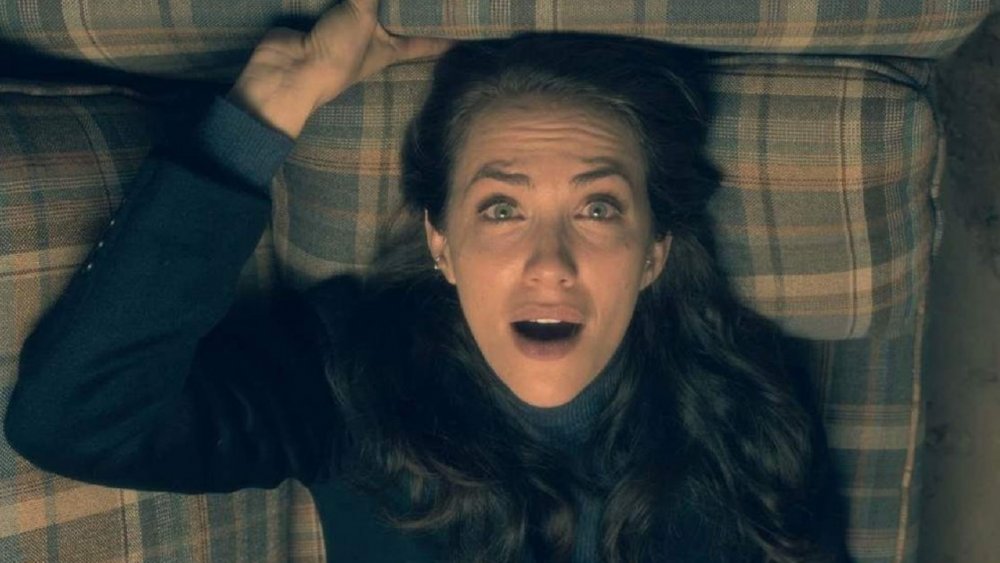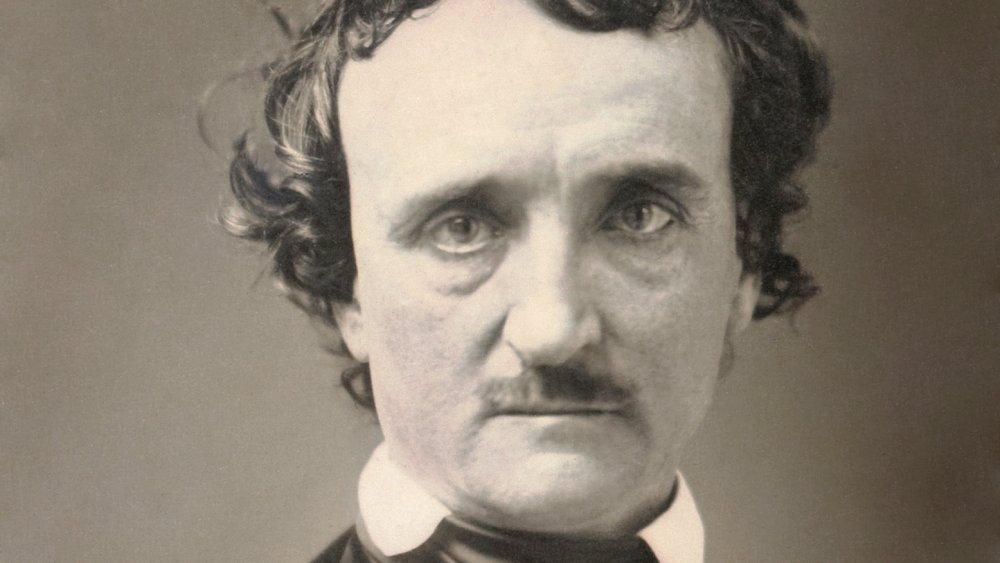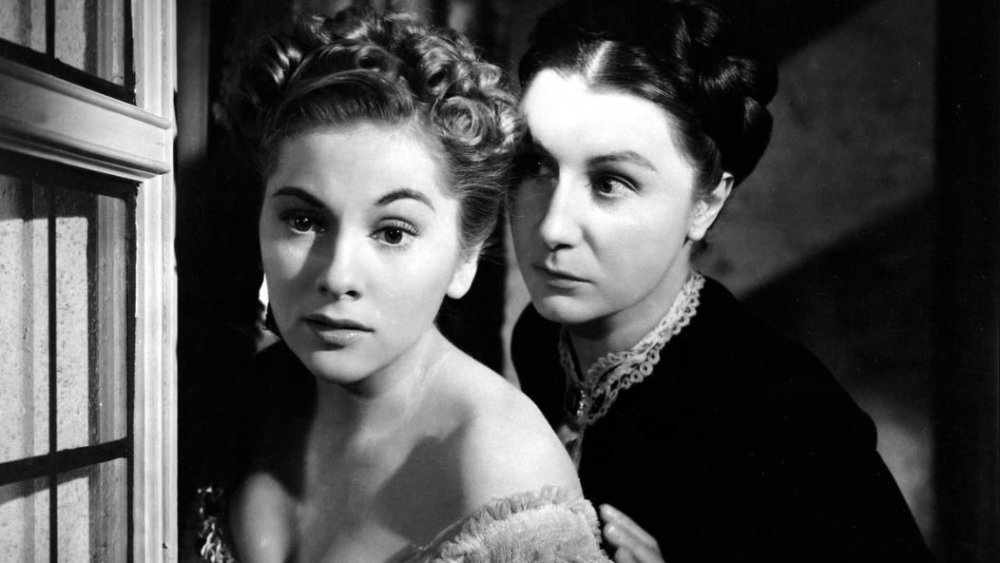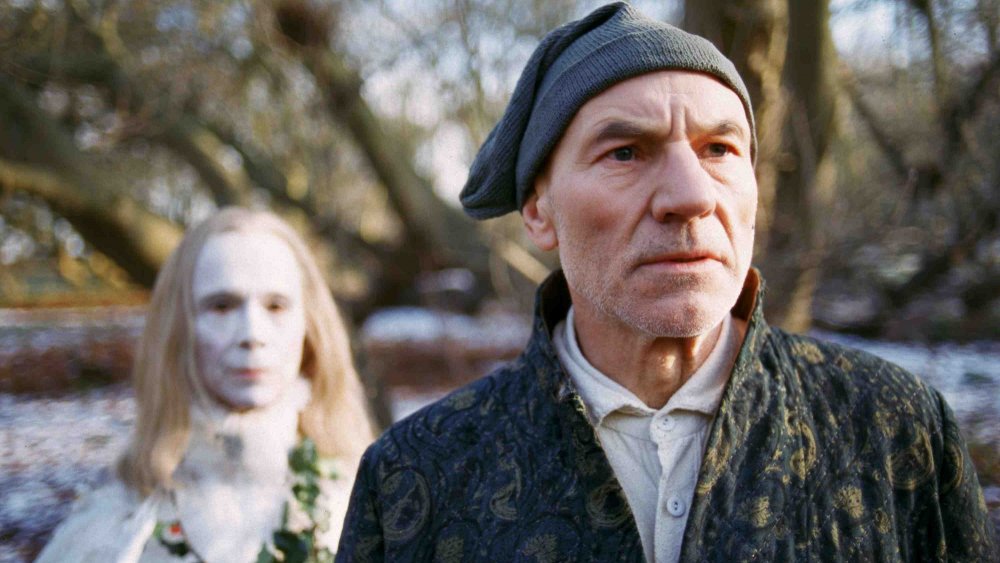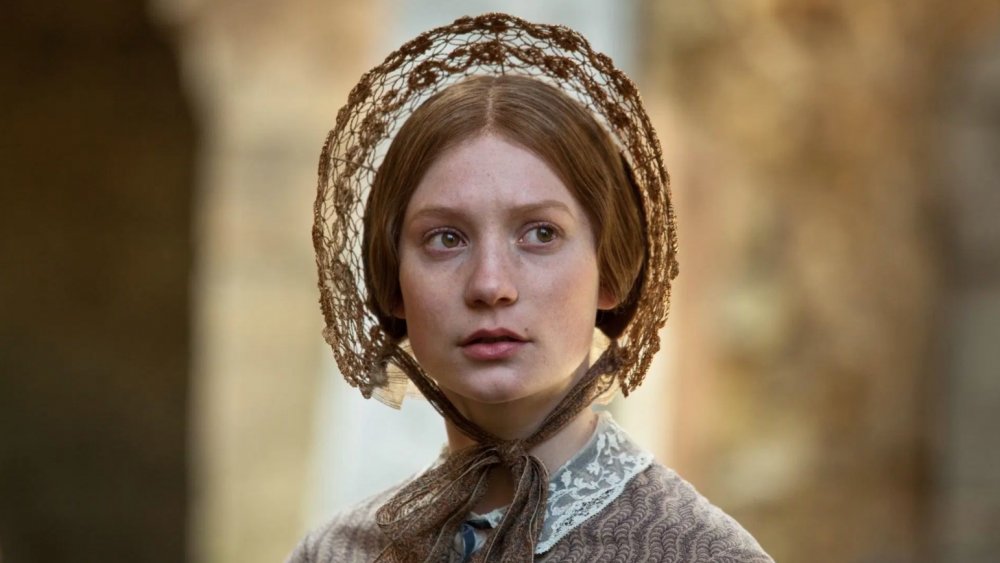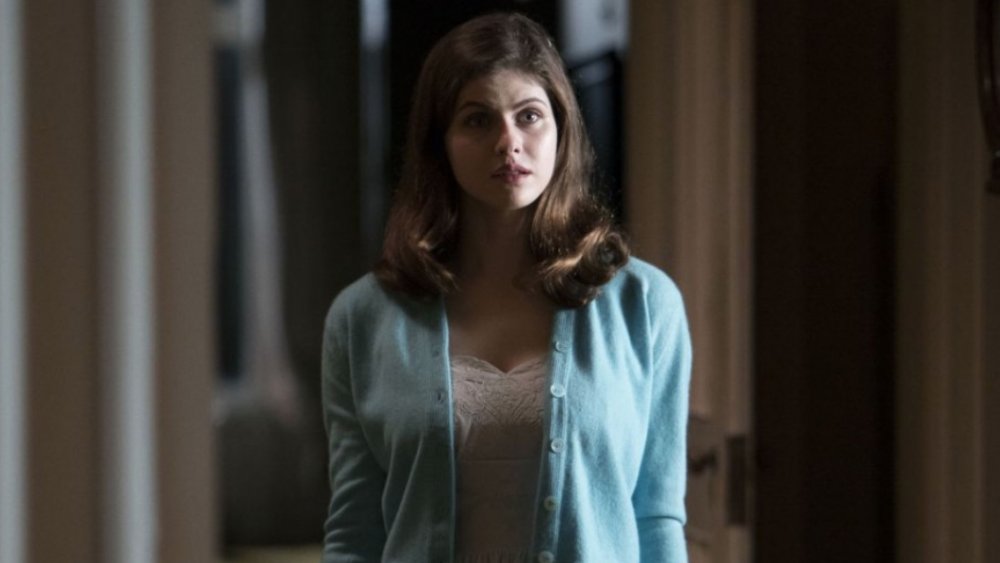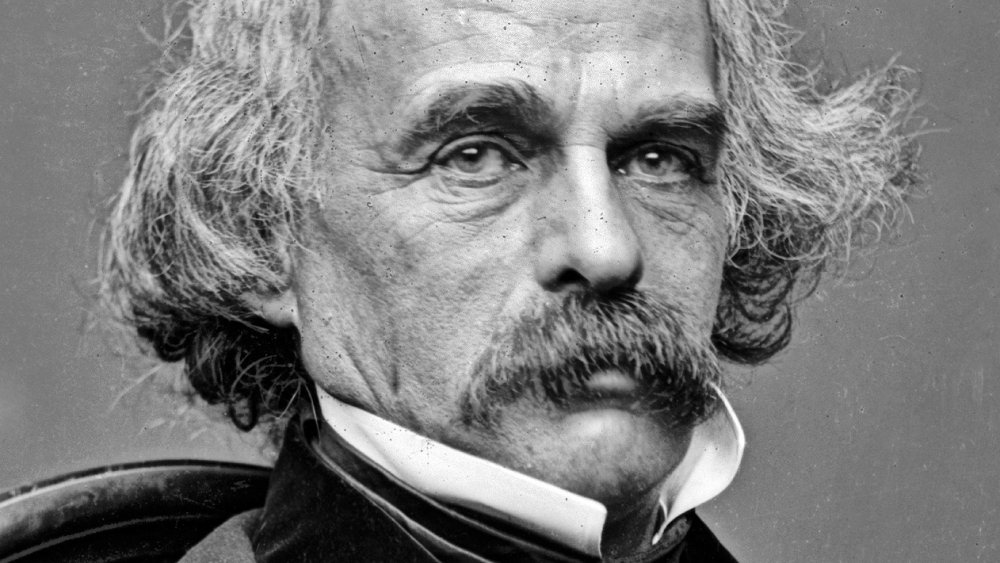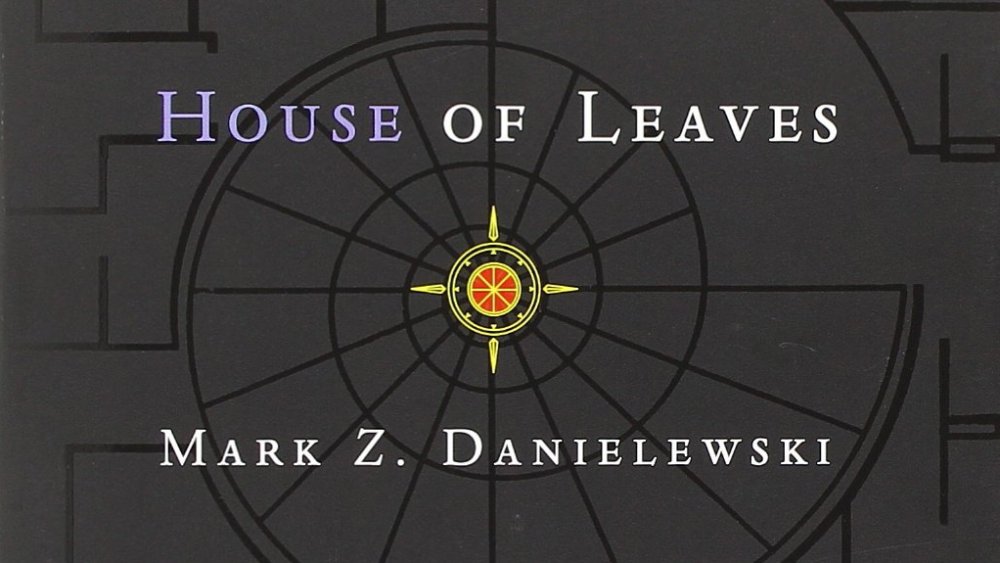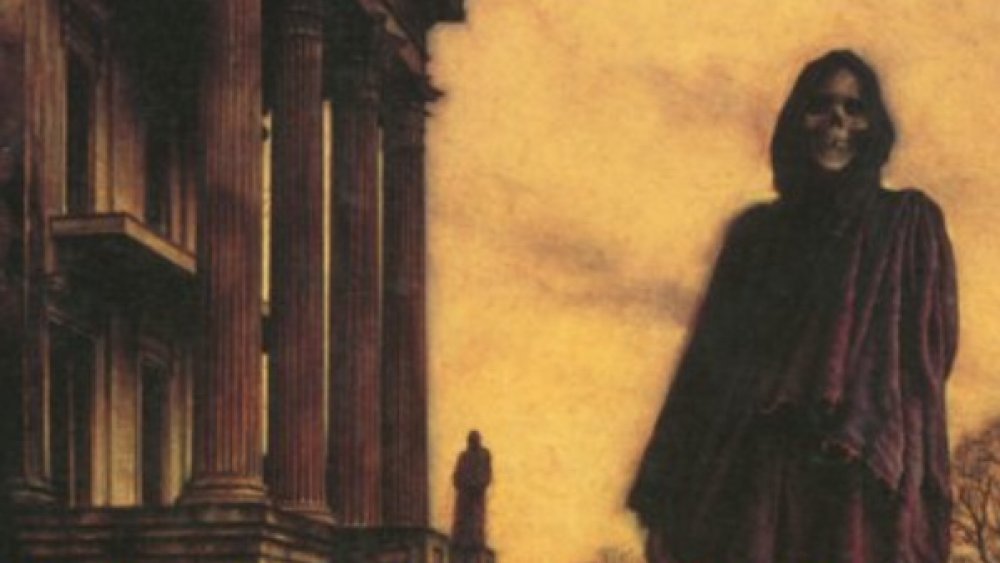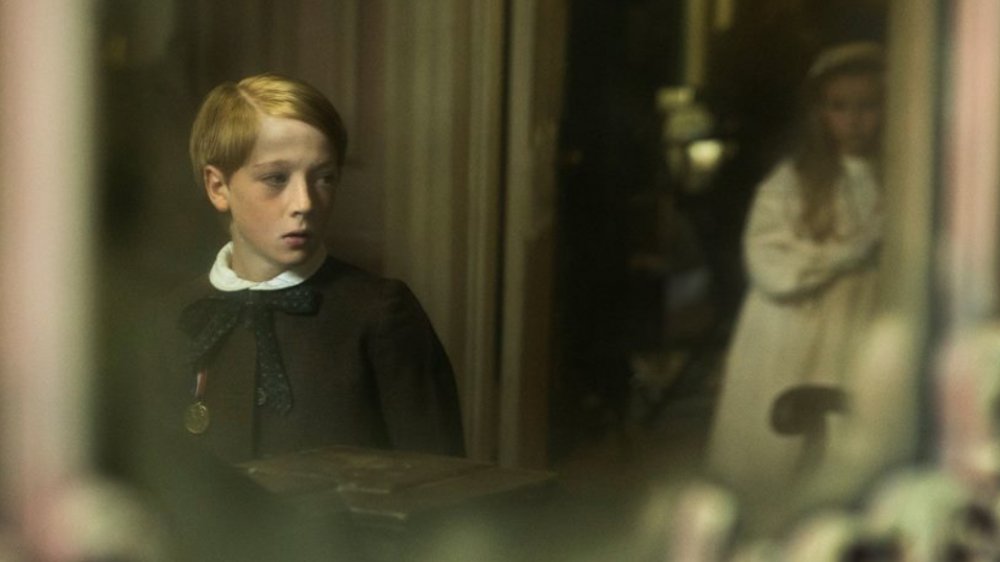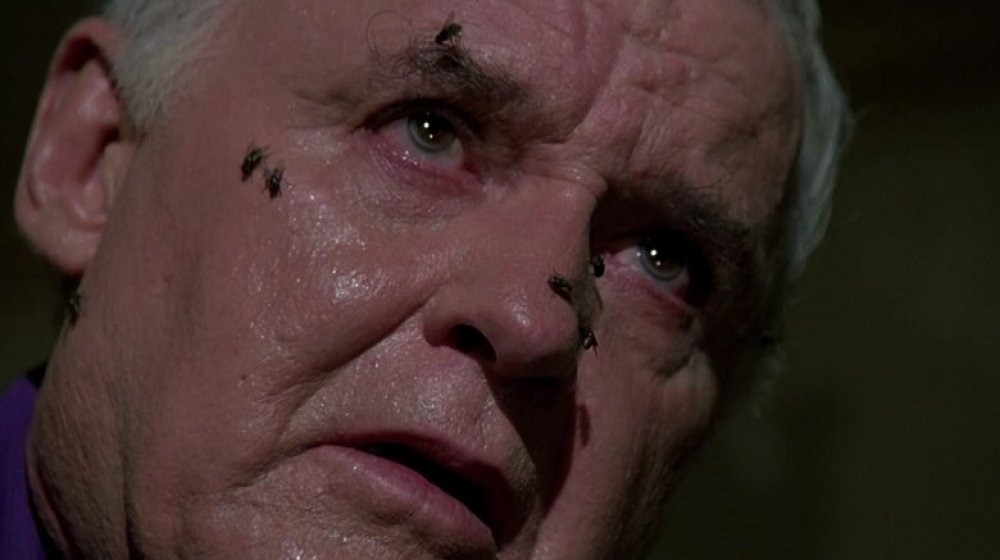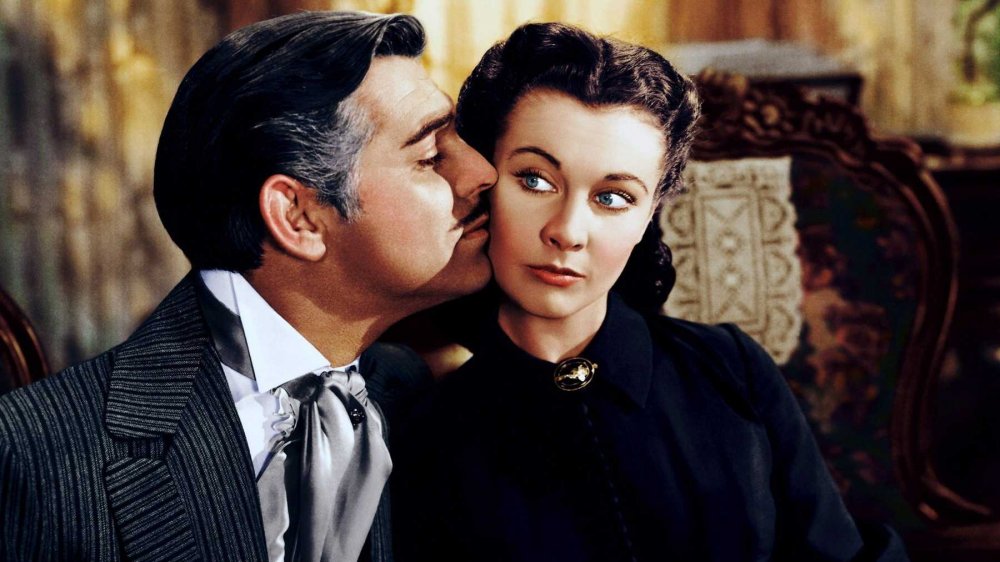Classic Stories We Want To See From The Haunting Series
We may receive a commission on purchases made from links.
Millions of people have watched The Haunting anthology series on Netflix, but many may not know that showrunner Mike Flanagan and company based both seasons of the celebrated horror series on some pretty famous books. And not New York Times best sellers, either (at least not in this century), but on classic novels that have been adapted to film and television many times before. The Haunting of Hill House was based on Shirley Jackson's 1959 haunted house novel, and it's been adapted before as The Haunting in 1963 and 1999. Meanwhile, The Haunting of Bly Manor was adapted from the works of Henry James, most notably his 1898 novella The Turn of the Screw, which has been adapted several times, most notably as The Innocents in 1961.
So that got us thinking — with more seasons of The Haunting practically guaranteed (it's right up there with Ozark and The Witcher as one of Netflix's most prized properties), what other classic stories can we look forward to? Given that The Haunting series has always done very loose adaptations of its source material, we let our imaginations run wild. Some of our ideas seem pretty likely, while others are admittedly way out there. But that's what's made The Haunting series so great — it's always surprised us. Which of these would-be adaptations do you want to watch? Here are the classic stories we want to see from The Haunting series!
The Haunting of the House of Usher would be Poe-fect
Edgar Allan Poe was a master of the mysterious and the macabre during his 40 years, so he would be a perfect fit for The Haunting series. Which one of Poe's books should Mike Flanagan and team adapt? Uh, all of them. After all, The Haunting of Bly Manor did adapt Henry James' 1898 novella The Turn of the Screw and his 1868 short story "The Romance of Certain Old Clothes." Okay, we know they can't really adapt all of Poe's work, so where would we start with The Haunting of Poe's Place (we're still working on the title)?
Well, we don't have to ponder weak and weary for very long to know there needs to be a reference to Poe's most famous work — his 1845 poem "The Raven" – be it a plot element, episode, or just a recurring bird, since we're not above shameless fan service. Beyond that, the obvious answer would be Poe's 1839 supernatural short story "The Fall of the House of Usher," about a man who visits the home of his childhood friend, a house which he believes has absorbed evil. The Haunting of The House of Usher — there's your title! Throw in a little bit of "The Tell-Tale Heart," Poe's 1843 short story about a man haunted by the beating heart of his murdered victim, and "Annabel Lee," Poe's final completed poem, a paean to a dead lover, and you've got yourself a show!
Rebecca deserves The Haunting treatment
We know what you're thinking. "You knuckleheads, Netflix already adapted Rebecca!" You're absolutely right, Netflix did adapt Dame Daphne du Maurier's 1938 Gothic romance novel, but if 2019's Little Women taught us anything, you can never have too many adaptations of a classic story.
Granted, it would be a tall order, as the original film was made by none other than the master of suspense himself, Alfred Hitchcock. In fact, it was his very first American film, and it even won Best Picture. As for the plot, this classic story tells the tale of a young woman who's haunted figuratively by her brooding husband's dead first wife. Plus, she's tormented literally by a chilling governess who adored her original mistress. In other words, it would be great for The Haunting treatment. Sure, it doesn't have real ghosts, per se, but in the right hands, it's perfectly unsettling, like any haunted house story should be.
The Haunting of Ebenezer Scrooge would be no humbug
It's ironic that the most famous ghost story is also the most famous Christmas story (with all due respect to National Lampoon's Christmas Vacation) — Charles Dickens' A Christmas Carol. Then and now, Dickens' 1843 novel is a best seller, and its 10,347,986 film adaptations (give or take a few) are so ubiquitous with the holiday season that some may forget it's a ghost story. Dickens certainly didn't, as he even subtitled it Being a Ghost Story of Christmas. It may seem unlikely to stretch A Christmas Carol's 176 pages into a multi-episode mini-series, but Bly Manor's showrunners already accomplished a similar feat with Henry James' 126-page novella The Turn of the Screw. We have no doubt they're up to the challenge, particularly if they pepper it with some of Dickens' other ghost stories.
The big question is, do we really want to see another adaptation of A Christmas Carol? Especially since the greatest one is, and always will be, A Muppet Christmas Carol (don't try to change our minds, you can't)? No, we don't want to see another "been there, done that" adaptation of A Christmas Carol — we want to see this one. An adaptation that balances darkness with lightness, scares with sadness, and is ultimately a story of human redemption. That balance was what made Hill House and Bly Manor so great, and it certainly applies to Dickens' classic. The Haunting of Ebenezer Scrooge is most definitely not a "bah, humbug!"
Jane Eyre would be a coming-of-age (ghost) story
What if they made a season of The Haunting that wasn't about ghosts? After all, the show's power is that it uses ghosts as an analogy for psychological human suffering, be it the traumatic childhoods in Hill House or the lingering guilt over lost loved ones in Bly Manor. When it comes to classic novels about psychological hauntings (if not literal hauntings), Charlotte Brontë's 1847 masterpiece Jane Eyre would certainly fit the bill. Heck, Brontë practically invented the genre with Jane Eyre, a novel that used the first-person narrative to really explore the inner workings of its protagonist. Not to sound like nerdy English majors here, but that's a really big deal, as it revolutionized storytelling on the page, stage, and screen forever.
Originally published as Jane Eyre: An Autobiography, Brontë's novel is a bildungsroman (a novel dealing with a character's formative years) and follows the titular Jane Eyre through her incredibly complicated relationship with her beloved Rochester. Proving a house doesn't need ghosts to be haunted, Thornfield Hall is plagued by strange noises and cackling, which turns out to be from a mad woman in the attic who sets beds on fire. If Hill House and Bly Manor are about ghosts who are metaphors for psychological issues, The Haunting of Thornfield Hall would be the opposite — how real-life psychological issues are often confused for the supernatural.
Shirley Jackson's other famous story would be a different kind of haunting
Shirley Jackon's most famous novel is of course her 1959 ghost story, The Haunting of Hill House, which has been adapted to film twice as The Haunting, first in Robert Wise's 1963 film starring Claire Bloom and Julie Harris, and later in Jan de Bont's 1999 film starring Liam Neeson, Catherine Zeta-Jones, and Owen Wilson. Oh yeah, and in 2018 as the Netflix series. But while The Haunting of Hill House gets all of the love, it wasn't the only Shirley Jackson story to deal with the strange and the mysterious.
Her final work, 1962's We Have Always Lived in the Castle, is a haunted house story without the ghosts, a dark fairy tale where the creepiness comes from the way human beings can treat each other when pushed to the brink. We Have Always Lived in the Castle is about two girls who live in isolation with their uncle following a family tragedy. Their claustrophobic and isolated existence is threatened when a cousin with dark objectives arrives at their estate. We Have Always Lived in the Castle was recently adapted, and it actually came out soon after The Haunting of Hill House, but despite its solid reviews (87% from critics and 77% from audiences), it wasn't widely seen. That wouldn't be the case should it ever get The Haunting treatment.
Nathaniel Hawthorne's Seven Gables is a witchy haunted house tale
The Turner-Ingersoll home is said to be the most haunted place in Salem, Massachusetts. You know, the town made famous for its witch trials? Well, the Turner-Ingersoll home was made famous by The Scarlet Letter's author Nathanial Hawthorne, who was inspired by it for his 1851 novel The House of the Seven Gables. Hawthorne's preface lays out the moral of the story: "The wrong-doing of one generation lives into the successive ones, and ... becomes a pure and uncontrollable mischief." Sounds like Hill House and Bly Manor, right?
The House of Seven Gables is about a cursed home that's built over an unquiet grave. The would-be owner — a cruel, cold-hearted man — attempts to kick out his elderly relatives, but he's thwarted by a country cousin and tenant trained in magic. The supernatural elements are merely suggested, as The House of the Seven Gables is really about how a home can be perceived as evil due to the history of the people who lived there. Even if it doesn't get The Haunting treatment, a Netflix adaptation of The House of the Seven Gables, with its allusions to ghosts and witches, would be, well, haunting.
House of Leaves is the craziest haunted house story ever
With its ghostly possessions, haunted dreamscapes, and even time travel, The Haunting series isn't your standard "what was that spooky sound?" ghost story. For a mainstream horror series, it's fairly experimental. Well, there's nothing mainstream about Mark Z. Danielewski's extremely experimental bestselling 2000 horror novel, House of Leaves. Danielewski's debut novel is about a documentary that showcases a family that moves into a house that's impossibly larger on the inside than it is on the outside. As in, it's a conventional home that has a giant maze and spiral staircase inside it.
If you haven't read it, that's about all we can tell you without you feeling like you (or we) are tripping on acid. It's an example of ergodic literature, which is a fancy way of saying that it's not just the story but how the book's arranged that's part of the reading experience. There are copious footnotes, references to fictional work, pages with only a few words, even lines of text arranged to mirror the events of the story. It's a lot like if David Foster Wallace's Infinite Jest were a haunted house story. While The Haunting series had to modernize stories to make them appeal to modern viewers, the showrunners would actually have to tone down House of Leaves' eccentricity to make it palatable. Like Hill House and Bly Manor, it'd be a loose adaptation, but a House of Leaves series would be intense.
The Haunting of Hell House would be legendary
Richard Matheson's most famous novel is I Am Legend, which has been adapted to film multiple times, most recently as the 2007 Will Smith blockbuster. Before you ask, no, we're not suggesting a zombie-vampire haunted house story set after the apocalypse, though that sounds pretty sweet, honestly. No, Richard Matheson also wrote a famous ghost story — one called "the scariest haunted house novel ever written" by none other than Stephen King – Hell House. Published in 1971, Hell House is about a dying publisher who offers a physicist and two mediums $100,000 to establish the facts of life after death ... by staying in an abandoned house in Maine that the locals call "Hell House."
Now, we're not academics, but couldn't they do, like, a research study instead? Out of this entire list, Matheson's Hell House is definitely the one we think The Haunting's showrunners will most likely adapt for Netflix. The story is actually a similar setup to Shirley Jackson's original The Haunting of Hill House novel, and we saw how Flanagan and team were able to reformat that story to fit a multi-episode mini-series about family trauma. What would they do with Hell House? Hopefully take a cue from Matheson and tell an unsettling story that bridges the philosophical gap between the scientific and the supernatural. We'd be down, and we know Stephen King would be, too.
The Little Stranger is like The Haunting of Downton Abbey
Stephen King (who we'd say is an authority on the horror genre) declared Sarah Waters' The Little Stranger "the #1 book of 2009." Not the number one horror book — the number one book, period. He also added that "several sleepless nights are guaranteed." Aw man, we're in. The Little Stranger is the newest book on this list, so it may not qualify as a "classic" yet, but it definitely qualifies for The Haunting series. Set in the postwar English countryside, a country doctor finds his life entwined with a once-wealthy family who owns a crumbling Georgian mansion known as Hundreds Hall that's suffering a series of supernatural events.
Okay, so that may not sound like the most compelling storyline, but the novel's power is its sophisticated portrayal of class, wealth, and the crumbling English aristocracy. There are also ghosts. So it's basically The Haunting of Downton Abbey. The Little Stranger was made into a film in 2018, but it wasn't widely seen, and it only managed mediocre reviews (65% from critics and 36% from audiences), so it's ripe for a reimagining by the team behind The Haunting series.
The Amityville Horror has been scaring people for decades
Before The Haunting of Hill House conquered the popular culture in 2018, perhaps the most famous haunted house tale was The Amityville Horror. Based on a true story, The Amityville Horror starts with a man who murders six members of his family at their home in Long Island, NY, in 1974. The next year, the Lutz family moves to this site of grisly murder (because of course they do) and becomes terrorized by paranormal phenomena. Jay Anson's book was a bestseller in 1977, and it was immediately made into a movie, becoming the second highest-grossing film of 1979.
There have been multiple sequels, spinoffs, and remakes of The Amityville Horror, including a poorly received 2005 remake starring Ryan Reynolds. Plus, it's also referenced in The Conjuring franchise. With more ridiculous direct-to-video sequels than most franchises have movies, is The Haunting of Amityville really necessary? Yes, yes it is. The Amityville Horror is one of the creepiest and most enduring ghost stories of the past 40 years, made even more so by the fact it's supposed to be true (though there's controversy about that). Given The Haunting series has been no stranger to tackling how lingering family trauma can possess a house, literally and figuratively, The Haunting of Amityville makes perfect sense for the series.
Here's a crazy idea — Gone with the Ghosts
Okay, we know what you're thinking. "These guys are nuts!" Yes, we're suggesting adapting the most popular movie ever as a ghost story, but hear us out — Gone with the Wind is already a ghost story, but the "ghost" isn't a person. Instead, it's the Old South. Here's our pitch. Gone with the Wind had the most famous cliffhanger in the history of literature and film. Scarlett O'Hara finally realizes she loves her husband, Rhett Butler, who tells her, "Frankly my dear, I don't give a damn," and leaves her anyway. She resigns herself to her fate, convinced she'll get Rhett Butler back. The end. But what if she doesn't? What if the beautiful southern belle who could have any man she ever wanted dies an old crone in her family's Georgia plantation, Tara?
Cut to 150 years later. An African-American family moves into the home, only to find it's haunted by the ghost of Scarlett and her former slaves, like Mammy and Percy. It's wacky, but we'd be into it. There's precedent for this type of storytelling too, as Watchmen and Lovecraft Country appropriated great literature as a springboard for commentary on race relations. Problem is, Gone with the Wind is owned by WarnerMedia, which owns Netflix's competitor, HBO Max, so we'll probably never see The Haunting of Tara, absent an unprecedented and highly unlikely cross-platform partnership. Still, we can dream. As Scarlett said, "After all, tomorrow is another day."
